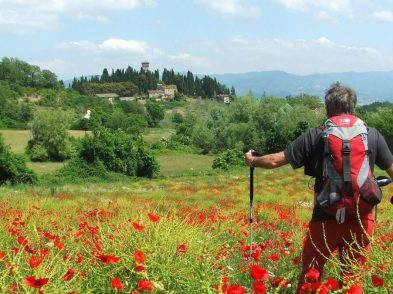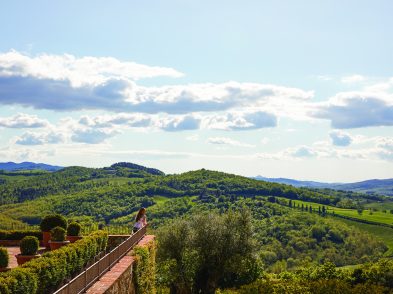The Eiffel Tower. The Seattle Space Needle. Seville’s Puente del Alamillo. These and other structures built for World’s Fairs are among the most iconic on the planet. The Universal Exposition has long been a place for architects to display their boldest ideas, play with cutting-edge materials and pull off incredible feats of engineering and design. At this Expo 2015, which opens May 1 in Milan, the architects chosen to create pavilions were asked to focus not only on innovation, particularly around the use of technology, but also on sustainability.
The architects commissioned to design pavilions for Expo 2015, among them some of the field’s leaders, were asked to base their designs on the concept of sustainability and to utilize recyclable materials and low-impact energy systems. They were also requested to include vast exterior spaces in their designs and place importance on green space. Here are just some of the results.

Italian pavilion
Italy’s pavilion may be, perhaps, the most technologically innovative. It is being built with break-through material: concrete that can ‘eat’ smog and thus help fight air pollution. (See more at theflr.net/italianpavilion.)
Austria’s pavilion will bring the crisp, clean air of an Alpine forest to otherwise smoggy Milan: a dense grove of trees and other vegetation native to Austria will be planted in 560 square metres within the exhibition space. Designed by an interdisciplinary team of scholars, agronomists and architects, the Austrian pavilion will communicate the importance of clean air and green space to quality of life. Producing 62.5 kilograms of fresh oxygen per hour—enough for 1,800 people—the pavilion will make every breath visitors take a veritable sensory experience. The pavilion’s designers hope to demonstrate the potential for a sustainable relationship with nature in an urban setting as well as to draw attention to Austria’s sustainable reforestation policy aimed at countering the decline of forests around the globe. (Get a preview at theflr.net/breatheaustria.)

French pavilion
The French pavilion, designed by XTU Architects Studio, will focus on the theme ‘producing and nurturing in another way.’ The undulating all-wood edifice envisions a ‘fertile’ French food market of the future. Extending over 3,600 square meters, the lightweight, easy-to-assemble structure is designed with attention to low energy consumption, waste recycling and water purification. Vegetables served at the pavilion’s restaurant will be cultivated on-site through hydroponics; other vegetation, such as herbs and hops, will grow freely on the roof and façades of the latticed structure. It is all designed to illustrate how the marketplace, once a place of exchange, can, in the future, become a place of food production to be harvested and consumed. (Take a look at theflr.net/frenchpavilion.)
Chinese pavilion
Although China will have a national pavilion (designed by Tsinghua University and Studio Link-Arc, featuring an undulating roof structure and a surrounding wheat field), for the first time in the history of the Universal Exposition, a Chinese company will have a pavilion of its own. The corporate pavilion sponsored by the real estate giant Vanke features sinuous geometry and a striking red ceramic façade designed by Daniel Libeskind. The 959-square-meter pavilion is designed to illustrate the potential of ‘building community through food:’ it recreates the convivial atmosphere and spirit of the shitang, or traditional canteen, where the ritual of eating is considered an essential element of socialization. (Peek inside at theflr.net/vankepavilion.)








